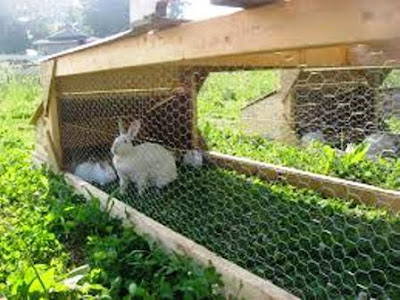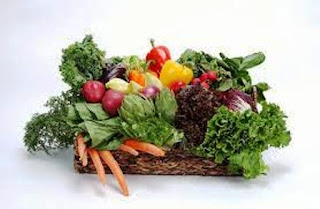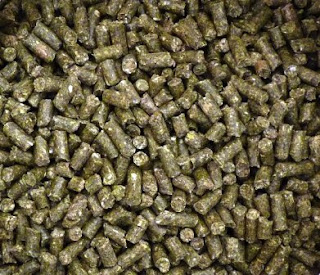NUTRITION FOR MEAT RABBITS
One of the most important factors that will influence success of any commercial rabbit meat production according to Walsingham, 1972, is proper feeding that will influence the rabbits growth, fertility and health. Meat rabbits of all breeds ought to get top nutrient rich diet for fast growth and good carcass at slaughter age.
Some foodstuffs given to meat rabbits contain a lot of protein (especially fresh greens); some are sources of energy (like rice bran, tubers, etc.). Protein and energy, as well as minerals are of importance. In addition, amount of feed to give a rabbit depends very much on the state of production. A lactating mother needs a lot of concentrate feed (grain, tubers) besides greens, to maintain her bodyweight and produce milk for her young. Young rabbits also need some concentrated feed for growing.
Apart from energy and protein, minerals are also an important ingredient in the diet. Greens and concentrates contain a lot of minerals. Nevertheless it is advisable to add some minerals in the form of salt to the food. For example, when feeding rice bran, one spoon of salt mixed with 1 kg of bran will be sufficient. If there is a local specialist or experienced breeder around ask them what they advise about the supply of minerals.
The type of nutrition for meat rabbits can sometimes be constrained by the available source from which these nutrients can be gotten (their availability, cost, perishability and digestibility).
When young rabbits are separated from a doe at two months old, they are kept in groups, fattened with top nutrition till they reach the weight for slaughter at four to five months.
I have highlighted below major sources of meat rabbit nutrition:
Grass hay:
In addition to being used by a doe to make her nest when she gives birth, grass hay is great to feed meat rabbits daily. It’s high in fiber which aides in digestion. Many breeders agree to the fact that alfalfa is great hay source, but you will want to avoid feeding your rabbits straight alfalfa hay. Alfalfa is not a grass; it’s a legume and often fed to horses, goats, cows and other ruminants to add protein to their diet. Plant protein is good for rabbits, but alfalfa also contains a comparatively high amount of calcium. High calcium levels can cause “sludge” constancy and eventually kidney stones. A grass/alfalfa blend is also fine.
In addition, timothy grass is great, brome and orchard and any other straw grass are good too.
 |
| Wheat / barley heads |
Wheat / barley:
These are great for growing kits as they’re easily digested for the newly weaned. Some people will keep a separate dish of wheat in a cage with young (2+ weeks old) kits. In addition, wheat helps the mother to produce more milk for her kits, which will convert to better growth and less loss of kits to death.
Calf Manna:
This is in a class on its own. Calf manna is a brand of supplement designed to promote milk production in many different species of animals. A couple tsp. of Calf Manna a day for pregnant or nursing does can be a great way to make sure she’s making enough milk for her kits (meat breeds generally have very large litters) and make sure she maintains good body condition throughout pregnancy and nursing so you can breed her back sooner.
 |
| bush trimmings |
Weeds, lawn trimmings and bush trimmings:
The useful wild plants for meat rabbits include young trees, leaves and shoots; dandelion and Plantain. Rabbits love dandelions so much that you might find yourself growing them in your yard (on purpose). They like fresh grass cuttings too. A lot of people will create a little pen of wire fencing to let rabbits roam around and forage (while their owner cleans cages) this is great but make sure that there are no poisonous weeds available to them! Another option is the rabbit tractor more on this setup here
 |
| Samples of Rabbit tractor |
 |
| Vegetables for rabbits |
Vegetables:
With a small operation, it may be economical to reduce the amount of pellets by feeding rabbits available greens. Greens and succulents include fresh legumes (alfalfa, clover), grasses, vegetables (lettuce, celery), roots and tubers (carrots, potatoes), weeds (dandelions), and comfrey. Clean table scraps that fit into these categories are also acceptable. If greens complement a pelleted diet, the amount of pellets can be reduced by 50% without lowering rabbit production.
 |
| Pelleted rabbit feed |
Commercial Pellets:
Most meat producers chose to feed only commercial pelleted diet which is balanced in the necessary nutrients (protein, energy, vitamins, and minerals). These diets contain alfalfa, grain (barley, wheat mill byproducts), protein supplements (soybean meal), vitamins, and mineral supplements. The last part of a rabbit’s intestines contains bacteria which produce vitamin B-complex and vitamin C. So the Vitamins A, D and E are needed in the diet and should be in the pelleted feed.
As you go along, you will find that hay and grass are important for the rabbit’s gut and must be available at all times. Make sure that any commercial food you provide is high quality and contains high amount of fiber. When you feed pellets, allow 25g (an egg cup-full) of pellets per kg of each rabbit’s body weight.
Always remember, what you feed a meat rabbit is what you should expect to see, in terms of meat. Even though rabbits generally have high feed to meat conversion ratio, you will not want to gamble with my rabbits diet so she doesn’t toy with your investment.
Related:



